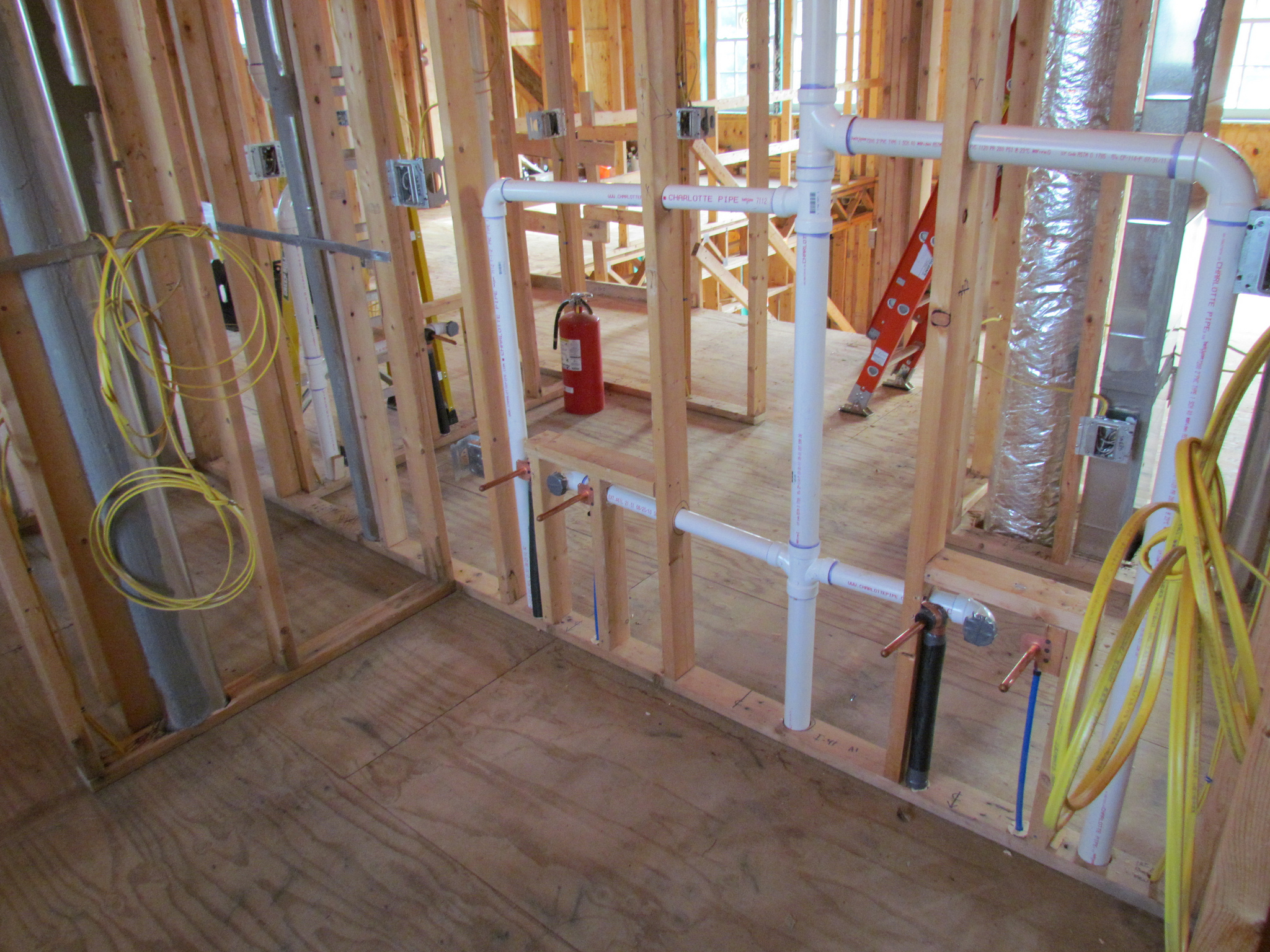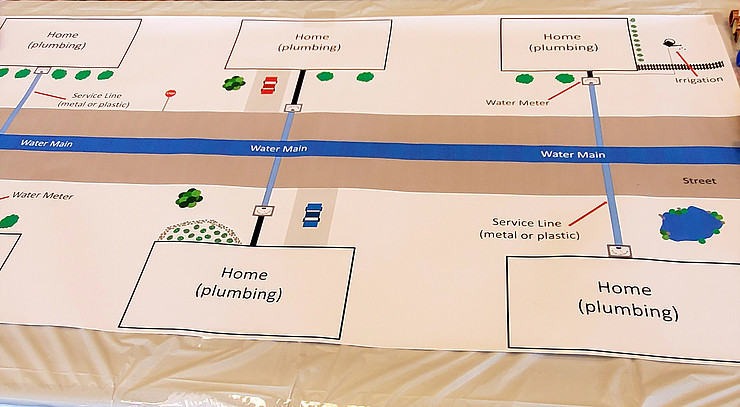A Detailed Look at Your House's Plumbing System Anatomy
A Detailed Look at Your House's Plumbing System Anatomy
Blog Article
We've stumbled on the article about Anatomy of a House: Understanding the Components listed below on the web and reckoned it made sense to write about it with you in this article.

Recognizing exactly how your home's plumbing system functions is necessary for every homeowner. From providing clean water for alcohol consumption, food preparation, and bathing to safely removing wastewater, a well-maintained plumbing system is vital for your family's wellness and convenience. In this thorough overview, we'll explore the intricate network that comprises your home's plumbing and offer pointers on maintenance, upgrades, and taking care of typical problems.
Introduction
Your home's plumbing system is greater than simply a network of pipes; it's an intricate system that ensures you have accessibility to clean water and effective wastewater elimination. Understanding its elements and how they collaborate can help you avoid costly repairs and ensure everything runs smoothly.
Standard Parts of a Plumbing System
Pipelines and Tubes
At the heart of your pipes system are the pipes and tubing that bring water throughout your home. These can be constructed from various materials such as copper, PVC, or PEX, each with its benefits in terms of longevity and cost-effectiveness.
Components: Sinks, Toilets, Showers, and so on.
Components like sinks, bathrooms, showers, and bathtubs are where water is made use of in your home. Comprehending how these components link to the pipes system helps in identifying problems and intending upgrades.
Valves and Shut-off Points
Valves regulate the circulation of water in your plumbing system. Shut-off valves are important throughout emergencies or when you need to make fixings, allowing you to separate parts of the system without interfering with water flow to the entire home.
Water Supply System
Key Water Line
The primary water line connects your home to the community water supply or a personal well. It's where water enters your home and is distributed to different fixtures.
Water Meter and Pressure Regulator
The water meter measures your water usage, while a stress regulatory authority ensures that water streams at a risk-free stress throughout your home's pipes system, stopping damage to pipelines and fixtures.
Cold Water vs. Warm water Lines
Understanding the distinction between cold water lines, which provide water directly from the primary, and warm water lines, which bring warmed water from the water heater, assists in troubleshooting and preparing for upgrades.
Water drainage System
Drain Pipes Pipeline and Traps
Drain pipes lug wastewater far from sinks, showers, and toilets to the sewer or sewage-disposal tank. Traps stop sewage system gases from entering your home and also catch particles that could trigger obstructions.
Ventilation Pipelines
Air flow pipes enable air right into the water drainage system, avoiding suction that could slow drain and trigger catches to vacant. Proper ventilation is vital for keeping the integrity of your plumbing system.
Value of Appropriate Water Drainage
Guaranteeing correct water drainage protects against back-ups and water damage. Regularly cleansing drains pipes and maintaining traps can stop expensive repairs and expand the life of your plumbing system.
Water Heater
Kinds Of Water Heaters
Hot water heater can be tankless or standard tank-style. Tankless heating units warmth water on demand, while containers keep heated water for instant usage.
How Water Heaters Attach to the Plumbing System
Recognizing just how hot water heater attach to both the cold water supply and warm water distribution lines aids in detecting issues like inadequate warm water or leakages.
Maintenance Tips for Water Heaters
Consistently flushing your water heater to eliminate sediment, examining the temperature level settings, and examining for leakages can expand its life-span and improve energy efficiency.
Usual Plumbing Issues
Leaks and Their Reasons
Leaks can occur because of aging pipes, loose installations, or high water pressure. Attending to leaks immediately prevents water damages and mold and mildew growth.
Blockages and Obstructions
Clogs in drains and bathrooms are commonly brought on by purging non-flushable things or a buildup of grease and hair. Making use of drain displays and bearing in mind what decreases your drains pipes can protect against obstructions.
Indicators of Plumbing Issues to Watch For
Low water stress, slow-moving drains pipes, foul odors, or abnormally high water costs are indicators of possible plumbing problems that need to be resolved without delay.
Plumbing Upkeep Tips
Normal Evaluations and Checks
Arrange annual pipes inspections to capture issues early. Try to find signs of leaks, corrosion, or mineral accumulation in taps and showerheads.
Do It Yourself Maintenance Tasks
Easy jobs like cleaning tap aerators, looking for toilet leaks utilizing color tablets, or shielding subjected pipes in chilly climates can protect against significant pipes concerns.
When to Call a Professional Plumber
Know when a pipes problem needs specialist expertise. Attempting complicated repair services without correct expertise can bring about even more damages and higher fixing expenses.
Upgrading Your Pipes System
Reasons for Upgrading
Upgrading to water-efficient fixtures or replacing old pipes can enhance water high quality, minimize water costs, and raise the worth of your home.
Modern Pipes Technologies and Their Benefits
Check out technologies like clever leakage detectors, water-saving bathrooms, and energy-efficient water heaters that can save money and decrease environmental effect.
Expense Considerations and ROI
Calculate the upfront prices versus lasting financial savings when considering plumbing upgrades. Lots of upgrades spend for themselves with minimized utility bills and fewer repairs.
Ecological Effect and Conservation
Water-Saving Components and Home Appliances
Setting up low-flow faucets, showerheads, and commodes can dramatically lower water use without compromising performance.
Tips for Decreasing Water Use
Basic practices like dealing with leaks promptly, taking much shorter showers, and running full lots of washing and meals can conserve water and reduced your energy expenses.
Eco-Friendly Plumbing Options
Consider lasting pipes materials like bamboo for floor covering, which is durable and eco-friendly, or recycled glass for counter tops.
Emergency situation Readiness
Actions to Take Throughout a Pipes Emergency
Know where your shut-off valves lie and just how to turn off the supply of water in case of a burst pipe or major leak.
Significance of Having Emergency Get In Touches With Helpful
Keep get in touch with info for regional plumbing technicians or emergency situation solutions conveniently offered for fast feedback throughout a pipes dilemma.
DIY Emergency Fixes (When Appropriate).
Short-term repairs like making use of duct tape to patch a leaking pipeline or positioning a pail under a dripping faucet can reduce damage until a specialist plumbing professional shows up.
Verdict.
Recognizing the anatomy of your home's plumbing system empowers you to maintain it efficiently, saving time and money on repair services. By complying with routine maintenance routines and remaining educated concerning modern plumbing technologies, you can ensure your plumbing system runs successfully for years ahead.
The Anatomy of Your Home s Plumbing System
Understanding the anatomy of your home s plumbing system is essential for any homeowner. It not only helps in identifying potential issues but also facilitates effective communication with professionals when repairs or upgrades are needed. Your home s plumbing system is more than just pipes and faucets; it s a complex network that ensures the efficient and hygienic flow of water in and out of your house. In this blog, we ll dissect the crucial components of your home s plumbing system. For those in Antelope Valley, Brock Plumbing is your trusted partner for all your plumbing needs, ensuring your system functions smoothly and efficiently.
Water Supply System
Main Water Line: This is where your home s plumbing system begins. The main water line connects your home to the public water supply or a private well. Pipes and Shut-off Valves: Pipes distribute water throughout your home. Shut-off valves are crucial for controlling the flow of water and making repairs without shutting off the entire system. Drainage System
Drain Pipes: These pipes carry waste and water away from sinks, toilets, and showers. Vents: Vents allow sewer gases to escape and help maintain proper pressure in the drainage pipes, ensuring efficient flow of wastewater. Traps: Every fixture has a trap, a U-shaped pipe that holds water and prevents sewer gases from entering your home. The most common is the P-trap under sinks. Fixtures and Appliances
Fixtures and appliances are the most interacted with parts of your plumbing system. They include sinks, toilets, showers, dishwashers, and washing machines. Each fixture and appliance has its own supply and drainage connection, ensuring they receive clean water and can dispose of wastewater effectively.
Water Heating System
Your water heater is a crucial component, providing hot water to various fixtures and appliances in your home. It can be tank-based or tankless, with each type having its own set of advantages and maintenance requirements. Regular maintenance is essential to ensure efficient operation and extend the lifespan of the unit.
Sump Pump
In areas prone to flooding or with high water tables, a sump pump is an essential part of the plumbing system. It s installed in the lowest part of your basement or crawlspace and pumps out water that accumulates, preventing flooding and protecting your home from water damage.
Septic System
Homes that are not connected to a municipal sewer system have a septic system and an underground wastewater treatment structure. Understanding how to maintain your septic system is crucial to prevent backups, odors, and early system failure.
Conclusion
Your home s plumbing system is a complex and essential network, ensuring the efficient and hygienic flow of water in and out of your property. Understanding its key components helps in maintaining it properly and identifying issues before they escalate into major problems. For residents in Antelope Valley, Brock Plumbing is dedicated to providing top-notch services, ensuring that every part of your plumbing system is in perfect working order. Trust our team of professionals to handle all your plumbing needs, ensuring your home remains comfortable, safe, and well-maintained.
https://brockplumbinganddrains.com/blog/the-anatomy-of-your-homes-plumbing-system/

I am just very occupied with Understanding Your Home's Plumbing Anatomy and I'm hoping you liked my article. So long as you appreciated our blog entry kindly be sure to pass it around. We enjoy reading our article about Exploring Your Homes Plumbing Anatomy.
Book Appointment Now Report this page